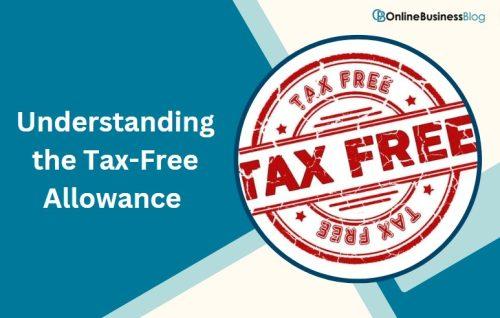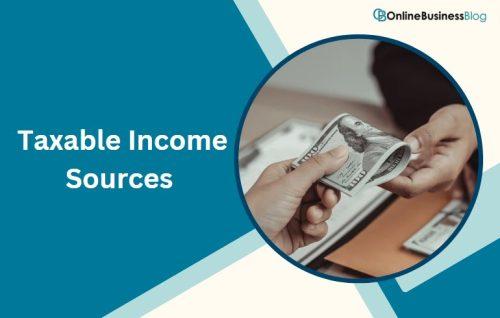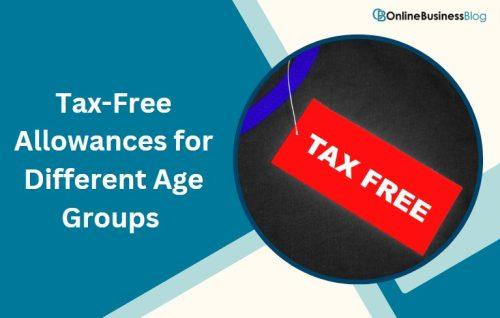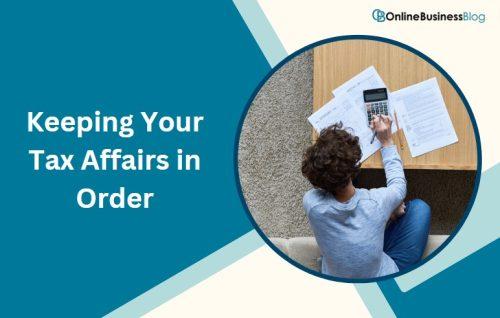Post Contents
Wondering how much you can earn before having to pay tax in the UK? Well, you’ve come to the right place! Understanding the ins and outs of taxation can feel like navigating a complex maze, but fear not. In this blog post, we’ll break it down for you in clear and simple terms. From unravelling the concept of personal allowance to exploring different income sources and tax bands, we’ll guide you through everything you need to know. So sit back, relax, and let’s dive into the fascinating world of taxes and thresholds!
Understanding the Tax-Free Allowance

Let’s start by understanding the tax-free allowance, also known as the personal allowance. In simple terms, it is the amount of money you can earn before you’re required to start paying income tax in the UK. For the current tax year (2023/2024), this threshold stands at £12,570.
Now here’s an interesting fact – the personal allowance can vary from one tax year to another. This means that each year, there may be changes in the minimum amount you need to earn before paying taxes. It’s essential to stay up-to-date with these variations and adjust your financial planning accordingly.
Why does the personal allowance change? Well, it primarily depends on factors such as inflation rates and government policies aimed at managing taxation levels. The aim is often to strike a balance between providing individuals with some income free from taxation while generating revenue for public services.
So remember, when considering how much you can earn before paying tax in any given year, keep an eye out for updates on the personal allowance set by HM Revenue and Customs (HMRC). Being aware of these changes will help ensure that you have accurate information when making important financial decisions throughout each fiscal period.
How Much Can You Earn Before Paying Tax in the UK?
The Personal Allowance is the amount of money you can earn before you start paying income tax in the UK. For the 2023/2024 tax year, the Personal Allowance stands at £12,570. This means that if your annual earnings are below this threshold, you won’t have to pay any income tax.
However, once your earnings exceed £12,570, you’ll be subject to income tax based on different tax bands and rates. Currently, there are three main tax bands: Basic rate (20%), Higher rate (40%), and Additional rate (45%).
Let’s take an example to better understand how this works. If your annual income is £30,000, after subtracting the Personal Allowance (£12,570), you’re left with a taxable income of £17,430. Multiplying this by the basic rate of 20%, you would owe £2,514 in income tax.
It’s important to note that there are certain factors to consider when it comes to UK income tax. You may be eligible for various tax reliefs that can help reduce your overall liability. Additionally, National Insurance contributions are separate from income tax and should also be taken into account.
Remember that these figures and rates may change over time due to revisions made by the government. To ensure accuracy and stay up-to-date with current information on taxation in the UK, it’s always advisable to consult official sources or seek professional advice.
Taxable Income Sources

When it comes to income tax in the UK, it’s important to understand which sources of income are subject to taxation. In general, any money you earn from employment is considered taxable income. This includes wages, salaries, bonuses, and tips.
But earned income isn’t the only type that can be taxed. There are also certain types of unearned income that may be subject to taxation. This can include rental income from properties you own, profits from investments such as stocks and shares, and even some state benefits.
Differentiating between earned and unearned income is crucial because they may be taxed differently. For example, earned income is usually subject to National Insurance contributions in addition to regular income tax. On the other hand, unearned income may have its own specific tax rates or thresholds.
It’s worth noting that not all forms of unearned income are taxable. Some types of investment gains or dividends may be exempted under certain circumstances or up to a certain amount.
To ensure compliance with tax regulations and avoid any penalties or fines, it’s essential to accurately identify your taxable sources of income. Keeping track of your earnings from both employment and various investments will help you stay organized come tax time.
Remember that understanding what constitutes taxable income is just one piece of the puzzle when it comes to navigating the UK tax system effectively. Being aware of the current allowances, deductions, and reliefs available for each category can further optimize your financial planning while staying within legal boundaries.
Income Tax Bands and Rates

Income Tax Bands and Rates: Breaking down the income tax rates in the UK
Understanding how income tax bands and rates work is essential for navigating the UK tax system. The amount of income you earn determines which tax band you fall into, and subsequently, how much income tax you will pay.
For the 2023/2024 tax year, there are three main income tax bands in the UK. The basic rate applies to incomes between £12,571 and £50,270, with a rate of 20%. If your earnings exceed this range, you move into the higher rate band.
The higher rate band applies to incomes between £50,271 and £125,140 at a rate of 40%. Any earnings above this threshold fall into the additional rate band where a 45% tax is applied.
To illustrate how these rates work in practice – let’s say your annual salary is £30,000. You would subtract the Personal Allowance (£12,570) from your total earnings (£30,000), leaving you with a taxable income of £17,430. This falls within the basic rate bracket; therefore you’ll owe 20% on this amount – resulting in an annual income tax payment of around £2,514.
It’s important to note that these figures can change each year as they’re subject to government updates. Being aware of current rates ensures accurate calculations when estimating your potential taxes owed.
Remember that while understanding different income brackets helps determine your liability for paying taxes accurately – it’s always wise to consult official government sources or seek professional advice for specific guidance tailored to your circumstances.
National Insurance Contributions
National Insurance Contributions (NICs) play a crucial role in the UK tax system, alongside income tax. While income tax is based on your earnings, NICs are contributions made towards certain social security benefits and the state pension.
NICs are calculated based on your income and employment status. The rates and thresholds for NICs can vary each year, so it’s important to stay updated with the latest information from HM Revenue & Customs.
There are different classes of NICs depending on whether you’re employed or self-employed. Employees typically pay Class 1 NICs, which are deducted automatically from their salary by their employer. Self-employed individuals usually pay Class 2 and Class 4 NICs through their annual self-assessment tax return.
The amount of National Insurance you pay depends on your earnings and the specific threshold that applies to you. For example, for the 2023/2024 tax year, employees start paying NICs once they earn £184 per week (£9,568 per year), at a rate of 12% up to an upper limit.
Self-employed individuals have different thresholds and rates for Class 2 and Class 4 contributions. For instance, in this same tax year, those earning over £6,515 annually will be liable to pay Class 2 NICs at a fixed weekly rate of £3.05.
Understanding how National Insurance Contributions work is essential as they contribute towards various benefits such as the State Pension scheme, unemployment benefits (known as Jobseeker’s Allowance), and Maternity Allowance for eligible individuals, among others.
It’s worth noting that exceeding certain levels of earnings may entitle you to additional state benefits but could also result in higher National Insurance contributions due to changes in thresholds or class definitions.
To ensure compliance with your obligations regarding National Insurance Contributions or any other aspect of taxation in the UK it’s always recommended to seek professional advice tailored specifically to your circumstances.
Tax-Free Allowances for Different Age Groups

The tax-free allowance, also known as the Personal Allowance, varies depending on your age group in the UK. Understanding how this allowance differs for different age groups is essential to ensure you are paying the correct amount of tax.
For individuals under 65 years old, the current personal allowance for the 2023/2024 tax year stands at £12,570. This means that if you earn less than this amount within a year, you will not have to pay any income tax. However, it’s important to note that once you exceed this threshold, income tax becomes applicable.
For students who are working part-time or have summer jobs alongside their studies, they may still be eligible for the personal allowance even if they earn less than £12,570 in a year. This provides some relief and encourages young individuals to enter the workforce without being burdened by excessive taxes.
Pensioners aged 65 and above may enjoy additional allowances beyond the standard personal allowance. The exact figures depend on individual circumstances such as whether they receive a state pension or other forms of retirement income. These additional allowances aim to support retired individuals and ease their financial obligations.
Understanding how these age-related allowances work can help individuals plan their finances more effectively while ensuring compliance with taxation regulations. It’s always recommended to consult with a professional advisor or refer to government resources for specific details regarding your situation.
Marriage Allowance and Blind Person’s Allowance
Marriage Allowance and Blind Person’s Allowance are additional tax allowances available in the UK that can help reduce your tax liability.
Marriage Allowance is a benefit for married couples or civil partners where one partner earns money less than the Personal Allowance (£12,570) and the other partner is a basic rate taxpayer. In this scenario, the lower-earning partner can transfer up to 10% of their unused Personal Allowance to their spouse or civil partner, effectively reducing their taxable income.
Blind Person’s Allowance is an extra allowance available for individuals who are registered blind or severely sight impaired. For the 2023/2024 tax year, this allowance is £2,520 on top of the standard Personal Allowance. This means that if you qualify for Blind Person’s Allowance, you can earn up to £15,090 before paying any income tax.
To be eligible for Marriage Allowance or Blind Person’s Allowance, you must meet certain criteria set by HM Revenue & Customs (HMRC). It’s important to note that these allowances cannot be claimed by individuals who are already claiming certain other benefits like Universal Credit.
Taking advantage of these additional tax allowances can help optimize your overall tax position and potentially save you money. If you think you may qualify for either a Marriage Allowance or a Blind Person’s Allowance, it’s worth exploring further and considering how they could benefit your financial situation.
Tax Deductions and Credits

Tax Deductions and Credits can play a crucial role in reducing your overall tax liability. Understanding these deductions and credits is important to ensure you are not paying more taxes than necessary.
Deductions are expenses that you can subtract from your taxable income, thereby lowering the amount of income subject to tax. Some common deductions include mortgage interest, student loan interest, medical expenses, and certain business expenses.
On the other hand, tax credits directly reduce the amount of tax you owe. They essentially act as a dollar-for-dollar reduction in your tax bill. Examples of tax credits include the Child Tax Credit, Earned Income Tax Credit (EITC), and Education Credits.
To claim these deductions and credits, it’s essential to keep accurate records of your eligible expenses and meet any specific requirements set by HM Revenue & Customs (HMRC). You will need to provide supporting documentation when filing your tax return.
It’s also worth noting that there may be additional reliefs or deductions available for specific circumstances such as charitable donations or pension contributions. Consulting with a tax professional can help maximize your eligibility for these benefits.
Understanding how deductions and credits work is key to optimizing your tax planning strategy and minimizing your overall tax burden. By taking advantage of all available options within the UK’s taxation system, you can potentially save money while remaining compliant with applicable laws.
Calculating Your Tax Liability
Calculating Your Tax Liability can seem like a daunting task, but with a step-by-step guide, it becomes much more manageable. To determine your potential tax liability in the UK, you need to consider various factors such as your income sources and applicable tax rates.
Gather all the information about your income sources – both earned and unearned. This includes wages from employment, rental income, dividends from investments, and any other sources of income. Different types of income may be subject to different tax rates or exemptions.
Next, identify which tax band your total taxable income falls into based on the current tax year’s thresholds. The basic rate applies to incomes between £12,571 and £50,270; the higher rate is for incomes between £50,271 and £125,140; while the additional rate applies to earnings over £125,140.
To calculate your tax liability within each band:
1. Subtract the Personal Allowance (£12,570) from your total taxable income.
2. Multiply this amount by the corresponding tax rate (20% for basic rate).
3. Repeat this process for each subsequent tax band if applicable.
For better clarity let’s consider an example: If you earn £30k per year:
- Deducting the Personal Allowance (£12k) leaves us with a taxable income of £18k.
- Multiplying this by 20% yields an estimated Income Tax charge of around £3.6k.
Remember that these figures are approximate examples based on current thresholds and rates – always consult official resources or seek professional advice for accurate calculations tailored to your circumstances!
By understanding how to calculate your potential tax liability using a step-by-step approach and considering specific scenarios like our example above helps demystify the process!
Keeping Your Tax Affairs in Order

Keeping your tax affairs in order is crucial for anyone earning income in the UK. One of the most important aspects of maintaining good tax records is record-keeping. By keeping thorough and organized records, you can ensure that you accurately report your income and claim any deductions or credits you’re entitled to.
It’s essential to keep track of all sources of income throughout the year. This includes employment earnings, self-employment income, rental properties, money investments, and any other taxable income. Make sure to retain documentation such as pay stubs, invoices, bank statements, and receipts related to these sources.
Additionally, maintaining detailed expense records is vital for claiming deductions. Whether you’re self-employed or have business expenses as an employee, having accurate records will help support your claims when filing your tax return.
Furthermore, staying compliant with HMRC regulations requires proper organization. Create a system where you can easily categorize and store relevant documents. Utilizing digital tools like accounting software or spreadsheets can streamline this process.
Lastly but importantly consider seeking professional advice from a qualified accountant who specializes in taxation matters. They can provide valuable guidance on record-keeping best practices and help ensure that you stay updated on any changes in tax legislation that may affect your obligations.
By prioritizing record-keeping and staying organized with your tax affairs throughout the year, you’ll be well-prepared come tax season and reduce the risk of errors or omissions on your returns.
Changes and Updates in Tax Laws
Staying informed about changes in tax laws is crucial for individuals and businesses alike. The UK tax system is subject to regular updates and amendments, which can have a significant impact on your financial affairs. To ensure compliance and make the most of new opportunities, it’s essential to stay up-to-date with these changes.
One way to keep track of tax law updates is by regularly checking official government websites or subscribing to newsletters from reputable sources. These resources often provide detailed information about legislative changes, including new rules and allowances that may affect your tax liability.
Adapting to new tax rules requires careful evaluation of their implications for your specific circumstances. It’s important to understand how any alterations might impact your income, expenses, deductions, and overall tax position.
Seeking professional advice can be invaluable when navigating complex tax legislation. Tax professionals have the expertise and knowledge necessary to guide you through any modifications in the law effectively. They can help you identify potential areas of concern or opportunity based on the latest regulations.
Being proactive in adapting to new tax laws demonstrates responsible financial planning. By staying informed and taking appropriate action, you can optimize your tax position while remaining compliant with all relevant regulations.
Remember, taxation laws are dynamic and subject to change over time; therefore, continuous monitoring is key for successfully managing your taxes in alignment with evolving legislation.
Seeking Professional Advice

When it comes to navigating the intricacies of the UK tax system, seeking professional advice can be a game-changer. A tax professional has an in-depth understanding of tax laws and regulations, which means they can provide you with expert guidance tailored to your specific situation.
One of the key benefits of consulting a tax professional is their ability to minimize your tax liability while ensuring compliance with all relevant laws. They have knowledge about various deductions, credits, and allowances that you may not be aware of, helping you maximize your savings. By leveraging their expertise, you can potentially reduce your tax burden and keep more money in your pocket.
Furthermore, engaging a tax professional can save you time and stress. Tax matters can be complex and time-consuming, especially if you have multiple income sources or investments. A qualified professional will handle the paperwork for you, ensuring accuracy and efficiency while relieving any anxiety associated with dealing with HMRC.
Knowing when to seek expert help is crucial. If your financial situation becomes more complicated – perhaps due to starting a business or receiving an inheritance – it’s wise to consult a specialist who can guide you through these changes effectively. Additionally, if you find yourself unsure about certain aspects of the UK tax system or encounter unexpected issues during the filing process, reaching out for help from an expert is highly recommended.
Conclusion
Navigating the UK tax system can seem daunting, but understanding how much you can earn before paying tax is an essential step towards financial planning. The Personal Allowance, which currently stands at £12,570 for the 2023/2024 tax year, determines whether you need to pay income tax or not.
By knowing your income and the corresponding tax bands and rates, you can calculate your potential tax liability accurately. It’s important to note that these figures may change over time, so staying informed about updates in tax laws is crucial.
In addition to income tax, National Insurance contributions also play a role in the UK tax system. These contributions are separate from income tax and have their own rates and thresholds.
Different age groups may have different personal allowances, so it’s important to consider any applicable variations based on your circumstances. Students and pensioners may be eligible for specific allowances tailored to their situations.
Furthermore, there are additional allowances available such as Marriage Allowance and Blind Person’s Allowance. Understanding if you qualify for these allowances can further reduce your overall taxable income.
Claiming deductions and credits can also help lower your overall tax liability. By being aware of all possible reliefs and deductions that apply to you or seeking expert advice when needed, you can optimize your finances while remaining compliant with the law.
Keeping proper records of your earnings, expenses, and other relevant documents is vital for accurate taxation purposes. Staying organized will make filing taxes easier each year while ensuring compliance with government regulations.
To adapt successfully to changes in the UK taxation landscape throughout the years requires staying updated on new rules and allowances introduced by legislation. Being proactive in learning about these changes will help you navigate through future uncertainties effectively.
While this article provides an overview of earning before paying taxes in the UK, it is always recommended to consult a qualified professional who specializes in taxation matters when necessary. They have extensive knowledge of current laws and regulations that could impact your financial situation.
Understanding how much you can earn before paying tax in the UK is an essential step towards responsible tax planning and compliance. It’s important to stay informed about taxes while taking appropriate steps to maximize your financial security.


